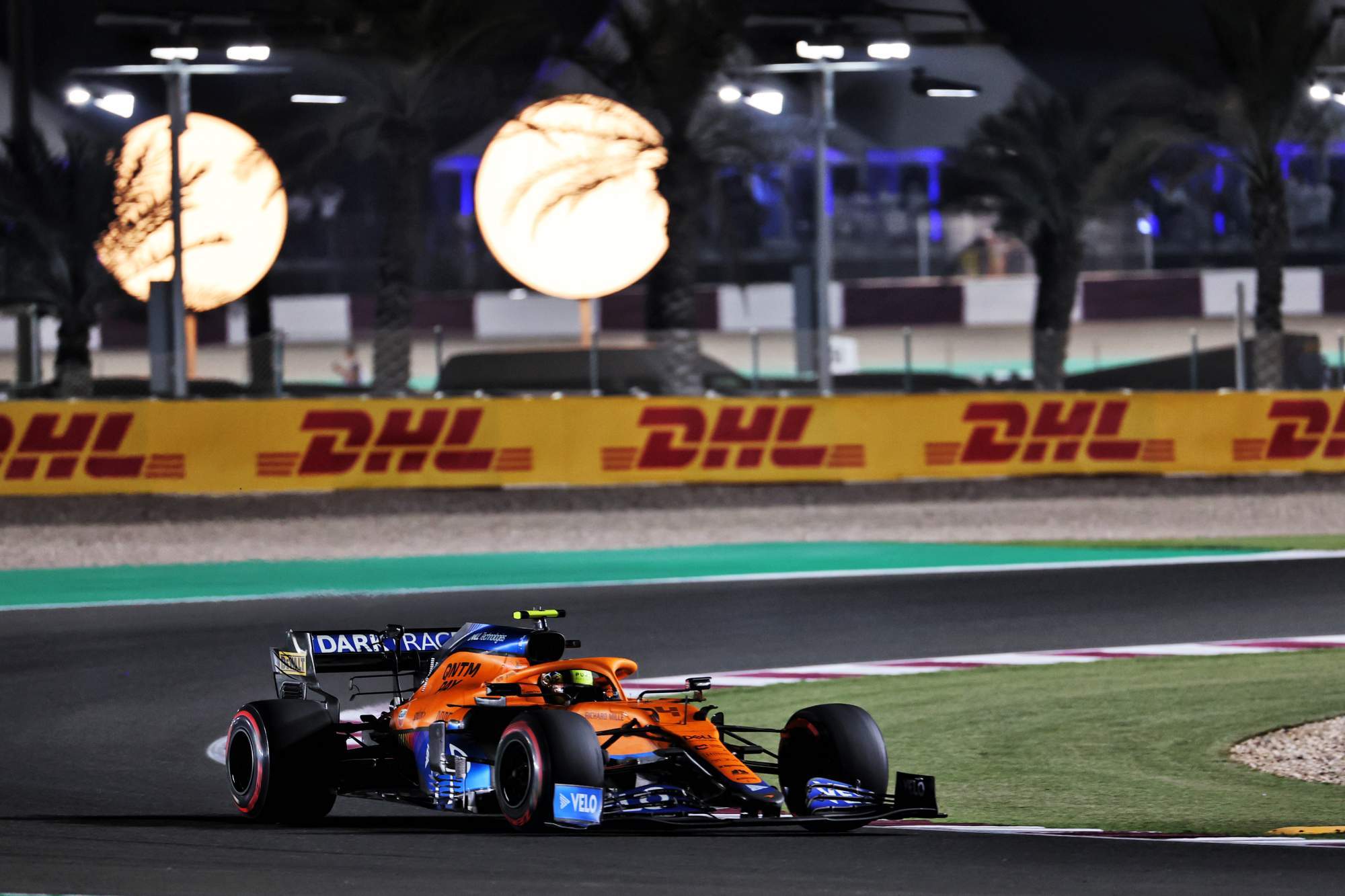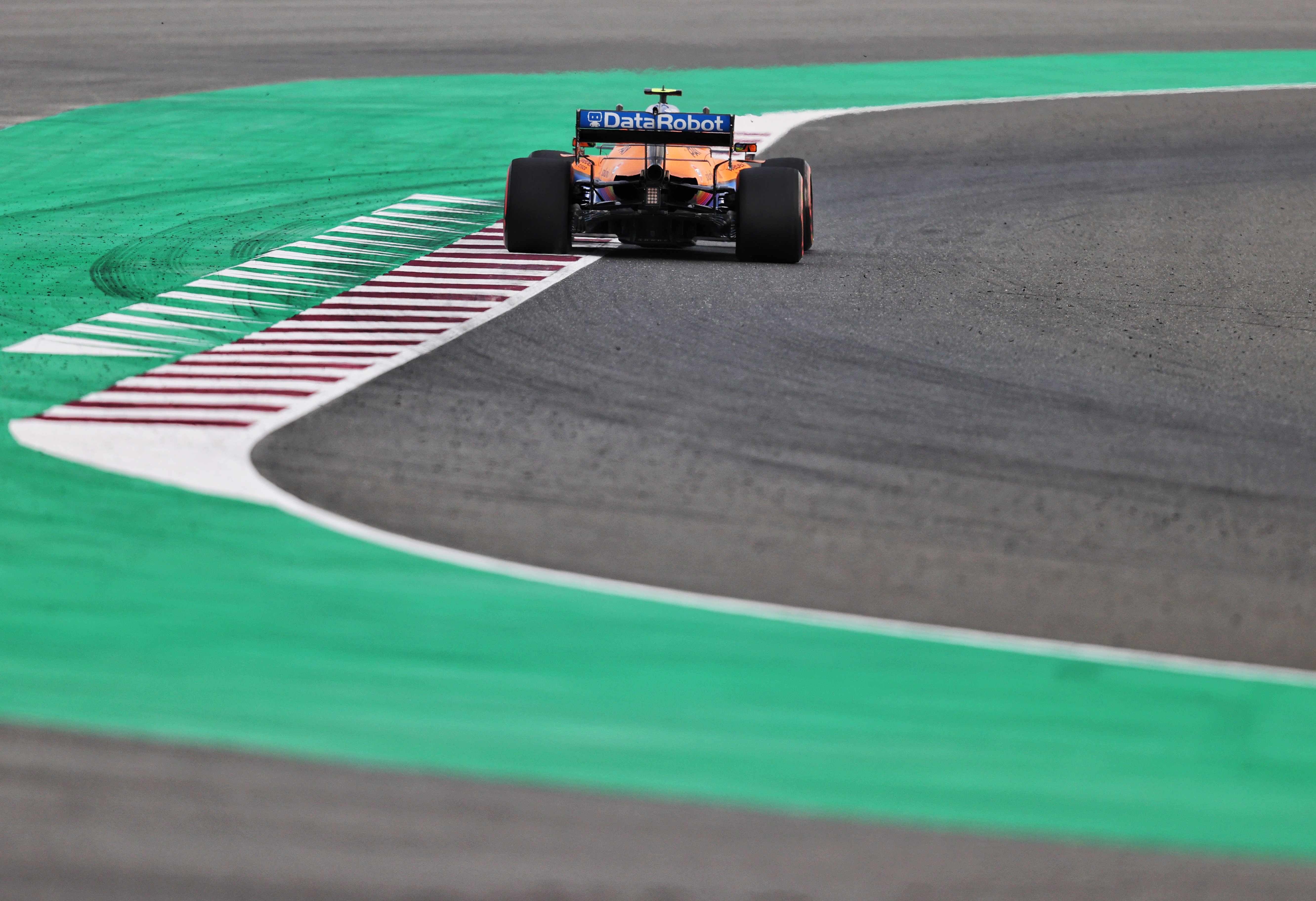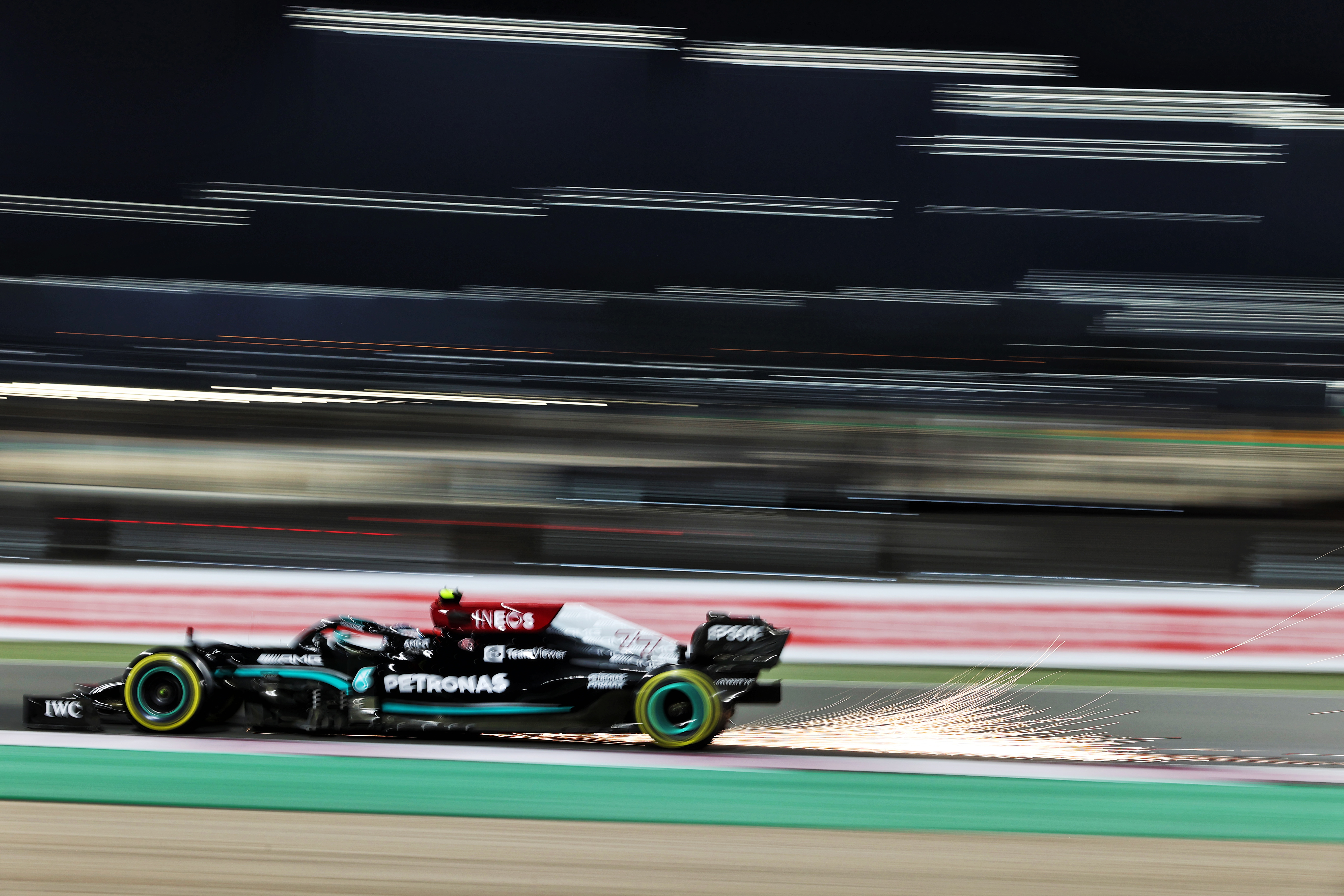Up Next

Formula 1 tyre supplier Pirelli has excluded “any production defects” as a potential cause of the left-front tyre punctures suffered by four drivers in the Qatar Grand Prix.
The latter half of F1’s inaugural race in Qatar was punctuated by four separate tyre deflations, for Mercedes driver Valtteri Bottas, McLaren’s Lando Norris and the Williams duo of George Russell and Nicholas Latifi.
While Russell, a director of F1’s Grand Prix Driver Association, seemed to take a fairly sanguine and understanding view of the puncture, both Bottas and in particular Norris were incensed, the latter strongly suggesting that there was a problem there that Pirelli needed to address.
For Bottas, Russell and Latifi, the puncture happened on a set of hards that went beyond 30 laps – but in Norris’s case it was a set of mediums that completed a shorter distance.
At Losail, Pirelli’s F1 chief Mario Isola theorised that the punctures were due to the heavy impacts from the track’s particularly demanding kerbs – and an update on the tyre supplier’s “ongoing analysis”, released during the weekend of the subsequent Saudi Arabian Grand Prix, suggests it has found support for this theory.

The analysis “has provided some initial conclusions that exclude any production defects”, Pirelli’s statement reads.
“Based on the findings obtained so far, the origin of the problem is mainly due to the amount of time these tyres were run on the kerbs, at high speed and with considerable lateral and vertical loads: a situation unique to the Losail circuit.
“The heavy demand caused by running over these kerbs, which isn’t possible to measure from the data available before the race, damaged the tyre construction and led to a loss of pressure in the internal sidewall, which consequently caused the structure to collapse after several seconds.
“Pirelli has shared all the technical details of the analysis carried out so far with the FIA and the teams.”
Isola subsequently elaborated on the investigation, revealing that the largely-intact tyre that Norris got back to the pits on when he suffered his failure was key to identifying the cause.
This pointed to cuts on the inside sidewall of the tyres caused by drivers crossing the green-and-white ‘pyramid’ kerbs then bringing the car back across them multiple times.

While these kerbs are not unique to Losail, the way drivers were using them was more aggressive.
“The analysis was not easy,” said Isola. “We had the idea that the kerbs were responsible for the failures, the deflation, but we had to find the evidence.
“In Qatar, we had the red-and-white kerbs that are normal kerbs and immediately after the red-and-white kerb we had the green-and-white [kerbs] shaped like a pyramid.
“In many corners, the drivers were running over the kerbs because they had an advantage in terms of lap time.
“In some other circuits the same kerbs are present, they are a standard kerb, but if you have a look at Silverstone Turn 7 in the exit because of the layout of the circuit they lose time if they hit the [pyramid] kerb.
“It’s a line that isn’t giving them any advantage, so they run over the kerb if they make a mistake, if they are trying to overtake and taking a different line. But it’s not a normal driving line like in Qatar where we had several kerbs of the same type.

“They were able to run on the kerb without going above the track limits. They were high speed, high lateral load, high vertical load and in some cases they were running beyond the kerb and then back.
“This movement was creating a deformation in the construction of the tyre that damaged the construction.
“The time that they spend on the kerbs was higher than any other circuit for a high number of laps, with the effect that they were not only running over the kerb but in many cases going beyond and back. That means you were hitting the inboard sidewall in a quite hard way and that was the reason why we had these deflations.
“The origin of the failure was a small cut on the inside sidewall, a loss of pressure and then obviously when the tyre loses pressure you have a complete deflation.
“We analysed many tyres from the race, but especially the one from Lando because he was able to get back to the garage and the tyre still had some pressure in it. So it was possible to identify the small cuts on the inside sidewall that was the origin.”
Given the lack of data Pirelli had on the circuit and the way these kerbs would be struck before the Qatar GP weekend and the lack of comparable lengths of runs during practice, this problem was not detected before the race.
However, there were concerns about front-left wear that led to Pirelli saying one-stop strategies were not advised at the Losail circuit.




